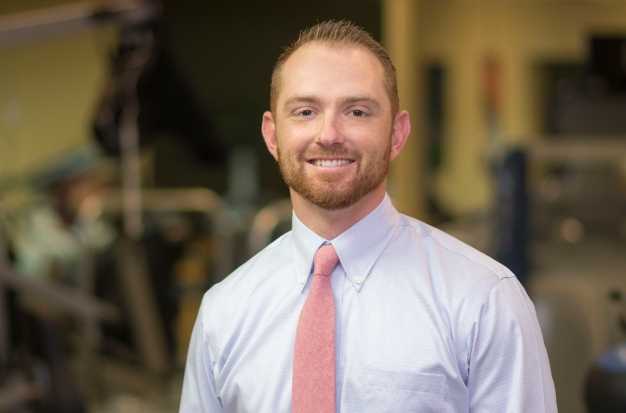Dry needling might sound painful, but it is far from it. This minimally-invasive technique has been around for many decades, providing relief with little to no discomfort. Whether you are an athlete or someone dealing with chronic pain, dry needling might be an option for you.
Jacob Cooper is a board-certified Physical Therapist specializing in Trigger Point Dry Needling. He has worked with many patients who have benefited from dry needling. In this article, he outlines how the increasingly popular treatment works and how patients can integrate it into their treatment plans.
What is Dry Needling?
Dry needling is a technique, usually part of a larger treatment plan, to help treat muscle pain and improve overall function. During this procedure, thin, solid filiform needles are inserted into specific points within the muscle tissue called trigger points. Trigger points are tight bands of muscle that can cause pain and limit movement. When targeting these points, dry needling can help release any muscle tension in the area, reduce pain, and improve a person’s overall daily functions.
Is dry needling the same as acupuncture?
Although both procedures involve needles, their similarities stop there. Dry needling and acupuncture serve different purposes: dry needling targets trigger points to address musculoskeletal issues, while acupuncture focuses on balancing the body’s energy flow through a more holistic approach.
“Dry needling is a tool we use to help improve overall function in how people move and feel in general. We are not just treating a certain painful area in their body but treating patients in a functional way,” Jacob says.
Since it is incorporated into a treatment plan, patients will undergo a thorough physical evaluation before beginning the procedure. This helps determine the root causes of pain by addressing impairments in range of motion, strength, and other contributing factors.
Common conditions that benefit from dry needling:
Achilles Tendinopathy
Ankle Sprains
Carpal Tunnel Syndrome
Headaches
Hip Pain
Knee Pain (Osteoarthritis)
Low Back Pain
Muscle Strains
Neck Pain
Plantar Fasciitis
Runner's Knee
Scar Tissue after Surgery
Shin Splints
Shoulder Dysfunction
Tennis & Thrower's Elbow
“The benefit of needling is more than just the trigger point, it can be felt throughout the body because we are stimulating nerve pathways to lead to the central nervous system and the brain,” Jacob says.
"Even when treating chronic pain, or things like fibromyalgia that maybe don’t tolerate traditional exercises or therapy practices because it’s too painful, needling is a great way to address the pain they are experiencing to be able to help them tolerate some increased activity.”
Electrical Dry Needling
Another option during dry needling is to use electrical stimulation. Using electrical dry needling offers additional benefits like increasing blood flow in the body, desensitizing painful nerves, and helping stimulate the release of endorphins, our body’s natural painkillers.
Electrical stimulation greatly benefits larger muscle areas or patients who suffer from repetitive overuse injuries because it helps provide faster relief. However, this option is available to most patients at the request of their physical therapist. “Anything we needle, we can stimulate,” Jacob says. If you are interested in electrical dry needling but feel anxious about the procedure, make sure to be open and honest with your physical therapist so they can help find the best option for you.
What is the number of dry needling sessions needed?
Patients can usually notice a difference right after one treatment, but it’s normal for it to take several sessions before the muscle is fully functional and pain-free. The number of sessions will depend on a person’s response to the treatment, but most have up to three to four follow-up sessions. Sessions typically never last longer than 15 minutes and are spaced out to allow the body healing time.
Is dry needling painful?
Patients may feel a slight discomfort or a quick twitch response felt in the muscle during the insertion of the needles. The procedure is generally well-tolerated, and any discomfort is usually very brief.
Can I return to normal activities after a session?
After dry needling, patients may experience some tenderness or soreness, but this doesn’t hinder normal activities. “The analgesic response often gives patients a burst of energy afterward. This really ends up helping them perform activities and exercises better.” Jacob says, “They can feel less pain and discomfort as soon as they walk out the door.” Patients might see minor swelling and bruising in the treated area afterward.
Do I need a referral for dry needling?
No, you do not need a doctor’s referral for dry needling. Because dry needling is often part of a larger treatment plan, patients typically undergo a physical evaluation that can be covered by insurance. However, dry needling is not covered by insurance and is a cash-pay service through Ogden Clinic Physical Therapy. The cost is marginal and will be discussed at the time of your appointment.
“Dry needling is not just a local effect. It can be felt throughout the whole body and helps people function and move better with the support of other treatments and therapies,” says Jacob.

Jacob Cooper is fluent in Spanish and sees patients at Ogden Clinic | Professional Center South. If you are interested in dry needling, schedule an evaluation with Jacob here or call (801) 475-3870.




.4).2511050842400.png)
.jpg.2511241144379.webp)